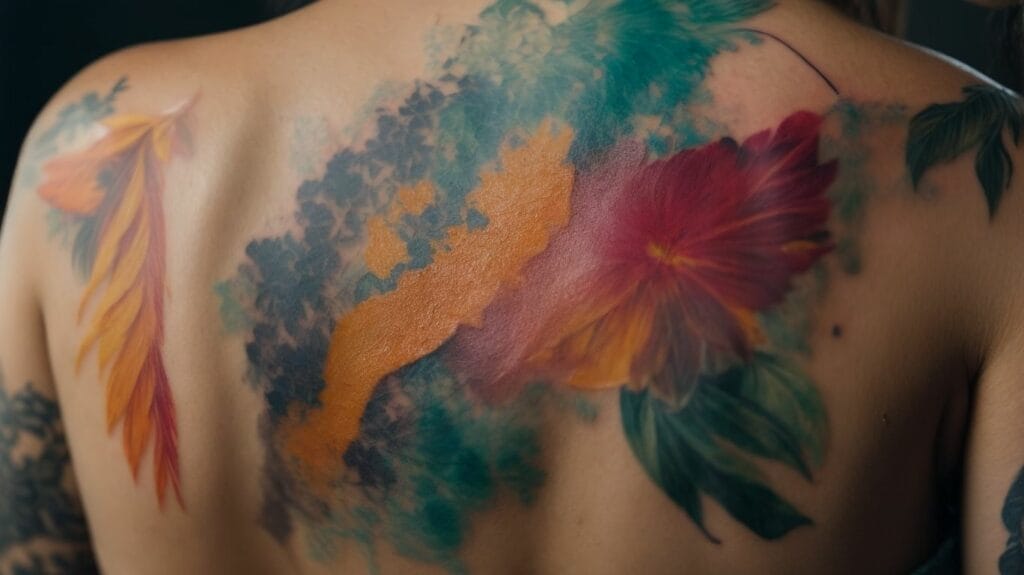Tattoo peeling is a natural part of tattoo healing and can occur a few days after getting a tattoo. Understanding why tattoos peel and how to care for them during this phase properly is crucial to ensuring proper healing and preserving the integrity of your tattoo. Let’s explore the various aspects of tattoo peeling and how to manage it effectively.
During the healing process, the skin undergoes a regeneration phase, and tattoo peeling signifies that new, fresh skin replaces the top layer. Common causes of tattoo peeling include natural healing, excessive dryness, incorrect aftercare, or an allergic reaction. When your tattoo starts peeling, it can be concerning, but it’s essential to know what to expect and how to care for your tattoo properly.
To properly care for a peeling tattoo, it’s essential to keep it clean and hydrated. Avoid picking or scratching the peeling skin, as this can cause damage and affect the appearance of the tattoo. Applying healing ointments or moisturizers recommended by your tattoo artist can help soothe the skin and promote healing.
However, there are certain things you should not do when tattoos peel. Avoid exposing your tattoo to excessive water, such as swimming in pools or soaking in hot tubs, as it can prolong the healing process and increase the risk of infection. Direct sunlight and tanning beds should also be avoided to prevent fading and damage to the healing skin. Refrain from forcefully removing the peeling skin, which can lead to scarring or infection.
While tattoo peeling is a normal part of the healing process, it’s essential to know when it could be a sign of infection. If you notice excessive pain, redness, swelling, pus, or an unpleasant odor around your tattoo, it’s crucial to seek medical attention from a tattoo artist or dermatologist.
Taking preventive measures can minimize the risk of excessive tattoo peeling. Properly following aftercare instructions provided by your tattoo artist, such as cleaning and moisturizing the tattoo, is crucial. Choosing a professional and experienced tattoo artist who follows strict hygiene practices and uses high-quality ink can also significantly reduce the chances of complications.
By understanding tattoo peeling, knowing how to care for your tattoo, and recognizing signs of potential problems, you can ensure a successful healing process and enjoy a vibrant and long-lasting tattoo.
Key takeaways:
- Understanding tattoo peeling: Learn about the process and reasons behind tattoo peeling to effectively manage and care for your tattoo during the healing process.
- Proper care for a peeling tattoo: Keep your tattoo clean and hydrated, and avoid picking or scratching the peeling skin to ensure proper healing and minimize the risk of infection.
- When to seek professional help: If you notice signs of infection or severe Peeling, consult a tattoo artist or dermatologist for proper evaluation and treatment.
Understanding Tattoo Peeling

Photo Credits: Tattooineplanet.Com by Nathan Baker
Understanding Tattoo Peeling is crucial for proper aftercare during the natural healing process. To ensure proper healing, follow these steps:
- Maintain cleanliness: Gently wash the tattooed area with warm water and mild, fragrance-free soap to keep it clean.
- Moisturize the skin: Hydrate the tattooed area by applying a thin layer of fragrance-free, hypoallergenic moisturizer.
- Avoid picking or scratching: Resisting the urge to pick or scratch the peeling tattoo is essential to prevent scarring and infection.
- Protect from sun exposure: Shield the tattooed area from direct sunlight or UV rays by using sunscreen with a high SPF and wearing protective clothing.
- Be patient: Tattoo peeling typically lasts for about 1-2 weeks. Allow the skin to heal naturally without resorting to aggressive measures.
Why Do Tattoos Peel?

Photo Credits: Tattooineplanet.Com by Douglas Perez
During the healing process of tattoos, peeling may occur. This is a natural shedding process on the top layer of the skin where the tattoo is located. Typically, Peeling begins about a week after getting the tattoo and can persist for up to two weeks. To prevent scarring or color loss, it is important to refrain from picking or scratching the peeling skin. Proper aftercare instructions provided by the tattoo artist, such as keeping the tattoo clean and moisturized, are crucial in minimizing Peeling. Ongoing studies aim to determine all the factors that contribute to tattoo peeling.
What Happens During the Healing Process?
During the healing process of a tattoo, several important stages occur. What Happens During the Healing Process? Initially, the tattooed area will be red and swollen as the body responds to the trauma. Over time, a scab will form as the skin starts to repair itself. Underneath the scab, new skin cells are produced to replace the damaged ones. As the scab begins to peel, it reveals the newly healed skin underneath. This peeling phase is a normal part of the healing process and should not be picked or forcibly removed. It is crucial to follow proper aftercare instructions to ensure a successful healing process.
Common Causes of Tattoo Peeling
Common Causes of Tattoo Peeling
The art of tattooing dates back thousands of years, with ancient cultures such as the Egyptians, Polynesians, and Native Americans practicing it for various reasons, including spiritual, cultural, and medicinal purposes. Today, tattooing has transformed into an art form that millions worldwide embrace for self-expression and personal storytelling. However, it is important to be aware of the common causes of tattoo peeling to ensure proper aftercare and maintain the longevity of your artwork.
Inadequate aftercare is one of the common causes of tattoo peeling. Failing to care for your tattoo during the healing process properly can result in Peeling, which can be avoided by following the guidelines provided by your tattoo artist. Overexposure to water is another factor that can disrupt the healing process and contribute to Peeling. It is crucial to minimize excessive moisture and avoid soaking your tattoo, especially in the early stages of healing.
Sun exposure is also a common culprit behind tattoo peeling. The ultraviolet rays of the sun can damage the tattooed skin, leading to peeling. Proper sun protection, such as applying sunscreen or covering the tattoo when exposed to the sun, can help prevent this issue. Furthermore, scratching or picking at the tattoo can cause irritation, which may result in premature Peeling. It is essential to resist the urge to scratch or pick at your tattoo and let it heal naturally.
Allergic reactions to tattoo ink can also cause peeling in some individuals. If you experience any signs of an allergic reaction, such as excessive redness, swelling, or itching, it is important to seek medical attention. Lastly, infections can rarely lead to peeling of the tattooed skin. In such cases, immediate medical attention should be sought to prevent further complications.
By being aware of these common causes of tattoo peeling, you can ensure proper care and maintenance of your tattoo, allowing it to remain a beautiful form of self-expression for years.
What to Expect When Your Tattoo Starts Peeling?
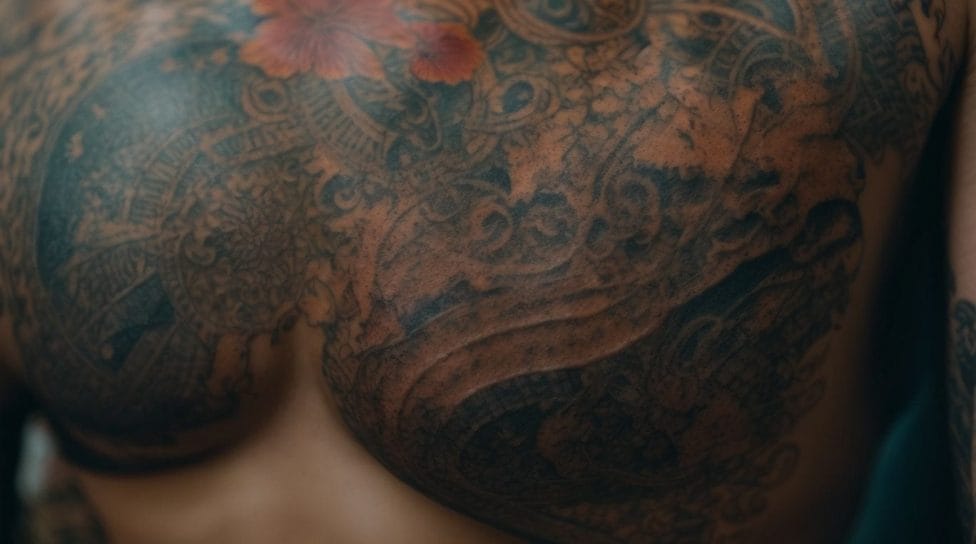
Photo Credits: Tattooineplanet.Com by Noah Johnson
What to Expect When Your Tattoo Starts Peeling?
When your tattoo begins to peel, it is a typical part of the healing process. Here’s what you can anticipate during this phase:
1. Peeling: After approximately a week, your tattoo might start peeling, resembling a sunburn. It is crucial not to pick or scratch at the peeling skin to prevent damaging the tattoo.
2. Itching: The peeling skin may also induce itching. It is essential to resist the urge to scratch as it can disrupt the healing process and impact the appearance of the tattoo.
3. Moisturizing: To alleviate dryness and minimize excessive Peeling, moisturize the area using a fragrance-free lotion.
4. Patience: The peeling process can last up to two weeks. Exercise patience and allow your tattoo to heal naturally.
Remember, if you have any concerns or encounter abnormal symptoms during this period, consult with your tattoo artist or a healthcare professional.
How to Properly Care for a Peeling Tattoo?

Photo Credits: Tattooineplanet.Com by Christian Hall
Discover the secrets to properly caring for a peeling tattoo to ensure longevity and vibrancy. From keeping your tattoo clean and hydrated to avoiding the temptation to pick or scratch the peeling skin, we’ve got you covered. Learn about the healing ointments and moisturizers that can promote healthy skin and aid in the rejuvenation process. Say goodbye to worries about tattoo peeling, and hello to a beautifully healed work of art!
Keep Your Tattoo Clean and Hydrated
To maintain the cleanliness and hydration of your tattoo, adhere to these guidelines:
- – Gentle cleansing: Use a mild antibacterial soap and lukewarm water to cleanse your tattoo delicately. Avoid vigorous scrubbing or rubbing that may trigger irritation.
- – Gently pat dry: After cleaning, carefully pat your tattoo dry using a soft towel. Refrain from using rough or abrasive materials.
- – Regular moisturization: Keep your tattoo hydrated by applying a thin layer of moisturizer that is both fragrance-free and alcohol-free. Make sure to select a moisturizer specifically created for new tattoos.
- – Avoid excessive water exposure: Limit the time your tattoo spends in water, such as swimming or taking lengthy baths. Excessive water exposure can cause ink loss and delay the healing process.
Pro-tip: It is always advisable to consult your tattoo artist if you have any concerns regarding the proper cleaning and hydration of your tattoo. They can offer personalized advice based on the specific details of your tattoo.
Avoid Picking or Scratching the Peeling Skin
To ensure proper healing and prevent complications, it is essential to avoid picking or scratching the peeling skin of your tattoo. Engaging in such behavior can disrupt the natural healing process, which may lead to scarring or infection. Instead, it is recommended to gently cleanse the area with mild soap and water and carefully pat it dry with a clean towel. Additionally, applying a thin layer of fragrance-free moisturizer will help keep the skin hydrated and prevent excessive dryness. Remember to be patient and allow the peeling process to happen naturally. By avoiding picking or scratching, you will effectively preserve the quality and appearance of your tattoo while minimizing the risk of ink fading or unevenness.
Apply Healing Ointments or Moisturizers
To properly care for a peeling tattoo, it is crucial to apply healing ointments or moisturizers. Here are some essential steps to follow:
- Before applying any products, make sure your tattoo is clean and dry.
- Take a gentle approach and delicately pat a thin layer of healing ointment or moisturizer onto the peeling skin.
- Avoid using products that contain harsh chemicals or strong scents, as they might irritate the tattooed area.
- Follow the advice of your tattoo artist and repeat this process 2-3 times a day.
- Keep applying ointments or moisturizers until the peeling process is complete.
Pro-tip: Opt for a fragrance-free and hypoallergenic moisturizer designed for tattoo aftercare. This will help promote healing and prevent excessive dryness. What to Do When Tattoos Peel?
What Not to Do When Tattoos Peel?
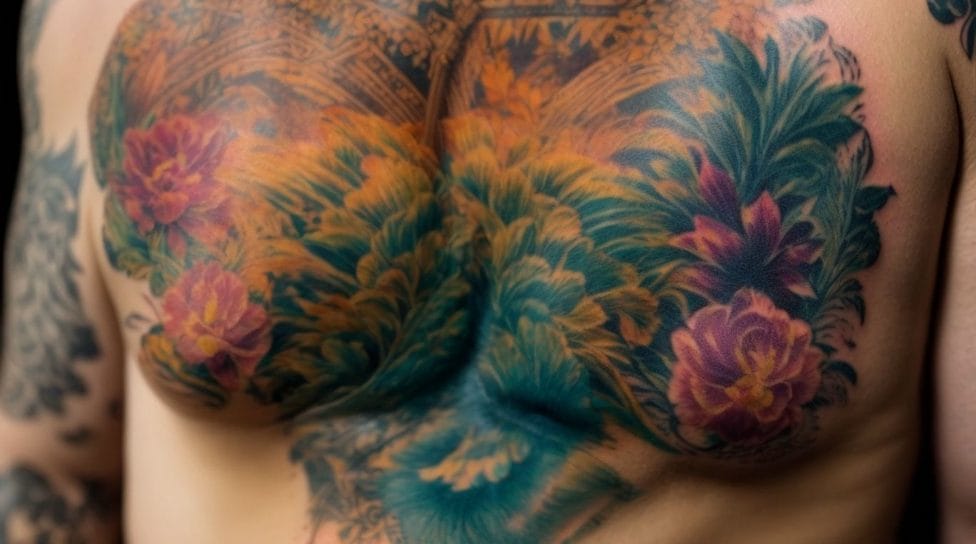
Photo Credits: Tattooineplanet.Com by Joshua Rodriguez
When your tattoos start to peel, it’s crucial to know what NOT to do. In this section, we’ll uncover some essential tips to prevent any mishaps. From avoiding excessive water exposure to steering clear of direct sunlight and tanning, we’ll guide you through the do’s and don’ts of maintaining your tattoo during the peeling process. Plus, we’ll reveal why forcefully removing the peeling skin is a big no-no. Let’s ensure your tattoo heals flawlessly by understanding what actions to avoid when tattoos start to peel.
Avoid Exposing Your Tattoo to Excessive Water
When your tattoo starts peeling, it is crucial to avoid exposing it to excessive water. Here are some steps to follow:
- Limit shower time: Keep your showers short and avoid hot water.
- Avoid swimming: Stay away from pools, hot tubs, and the ocean until your tattoo is fully healed.
- Protect it during baths: Cover your tattoo with a waterproof bandage or plastic wrap to shield it from water.
- Pat dry gently: After washing your tattoo, gently pat it dry with a clean towel instead of rubbing.
- Avoid excessive sweating: Refrain from intense workouts or activities that cause profuse sweating until your tattoo is healed.
By following these steps, you can prevent water-related complications and ensure proper healing of your tattoo.
Avoid Direct Sunlight and Tanning
While your tattoo is peeling, it’s important to avoid direct sunlight and tanning. Exposing your tattoo to the sun’s UV rays can cause fading and damage the healing skin. Tanning beds can have the same negative effects on your tattoo. To protect your tattoo, keep it covered or apply sunscreen with a high SPF when you go outside. It’s best to wait until your tattoo is fully healed before exposing it to sunlight or engaging in tanning activities. By following this advice, you can ensure that your tattoo heals properly and maintains its vibrant colors.
Do Not Forcefully Remove the Peeling Skin
When your tattoo starts peeling, it’s essential to resist the urge to remove the peeling skin forcefully. It is crucial not to disrupt the healing process and increase the risk of infection. Instead, allow the skin to shed on its own naturally. To ensure proper healing, keep the area clean and moist by gently applying a thin layer of healing ointment or moisturizer. It is important to avoid picking or scratching at the peeling skin as it can lead to scarring and damage to the tattoo. If you have any concerns or notice signs of infection, it is highly recommended to consult a tattoo artist or dermatologist for a thorough evaluation and proper guidance. Remember, practicing patience and following appropriate aftercare are key to achieving a successful healing process.
Can Tattoo Peeling Be a Sign of Infection?
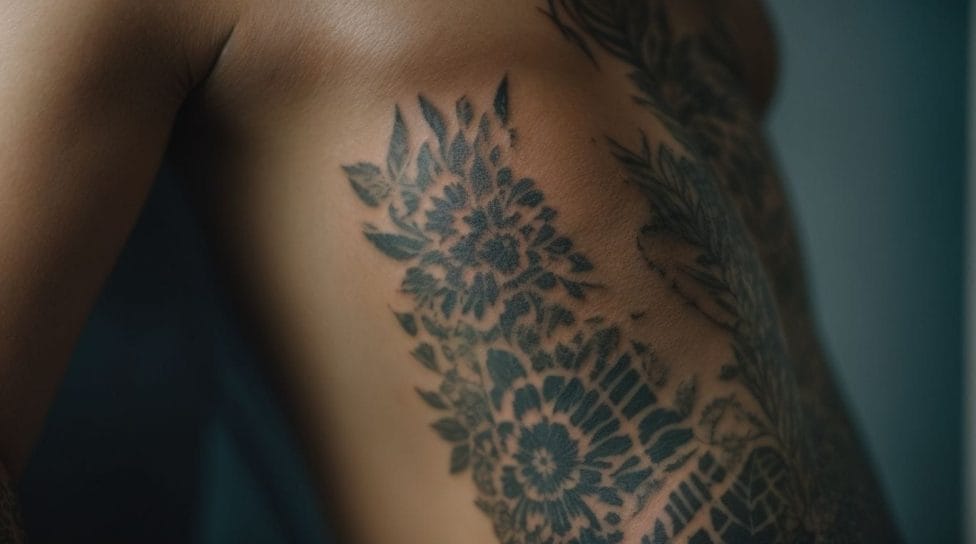
Photo Credits: Tattooineplanet.Com by Scott Nelson
Tattoo peeling can signify infection, but it is usually a natural part of the healing process. It is important to monitor for other symptoms, such as redness, swelling, and discharge. If any of these symptoms occur alongside peeling, it is recommended to consult a healthcare professional. To prevent infection, it is crucial to follow aftercare instructions, including keeping the tattoo clean and moisturized. Additionally, avoiding picking or scratching the tattooed area can facilitate faster healing and decrease the risk of infection.
When to See a Tattoo Artist or Dermatologist?

Photo Credits: Tattooineplanet.Com by Nathan Hernandez
If your tattoo starts to peel, it is important to know when to see a tattoo artist or dermatologist. While some peeling is normal during the healing process, certain signs indicate you should seek professional advice. Look out for excessive Peeling, prolonged healing time, severe itching, or signs of infection like pus or redness. If you experience any of these, it’s best to consult a professional for proper evaluation and treatment. Remember, the expertise of a tattoo artist or dermatologist can help ensure the health and longevity of your tattoo. When to see a tattoo artist or dermatologist?
Preventive Measures to Minimize Tattoo Peeling
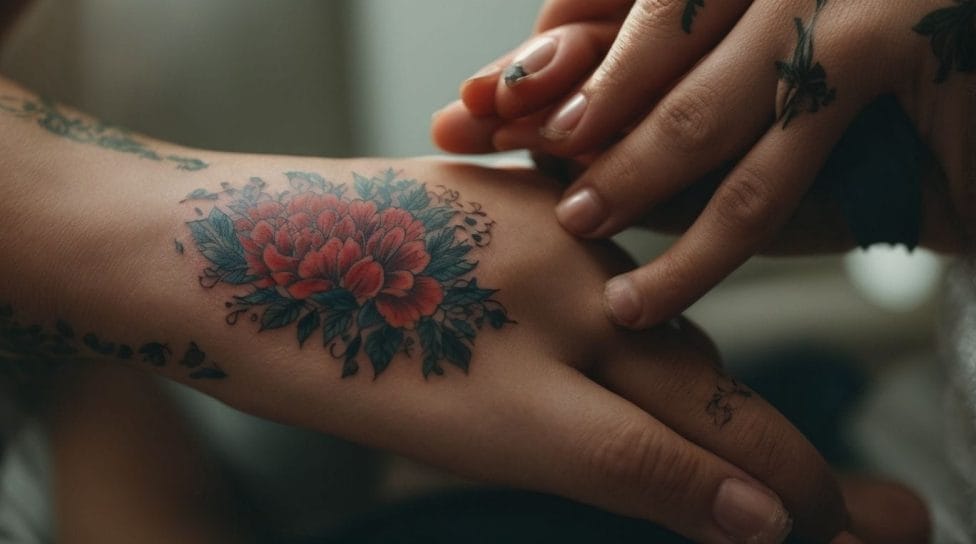
Photo Credits: Tattooineplanet.Com by Austin Harris
Looking to keep your tattoo in top shape? Discover essential preventive measures to minimize tattoo peeling. From properly following aftercare instructions to selecting a seasoned artist, we’ve got you covered. Get ready to learn how to make your tattoo stand the test of time and keep that ink looking fresh and vibrant!
Properly Follow Aftercare Instructions
- Properly following aftercare instructions is crucial for the healing and preservation of your tattoo. Please keep it clean: Gently wash your tattoo with mild, fragrance-free soap and lukewarm water. Pat dry with a clean towel.
- Moisturize: It is important to properly follow aftercare instructions and apply a thin layer of tattoo-specific aftercare lotion or ointment to keep your skin hydrated and prevent excessive Peeling.
- Avoid picking or scratching: To avoid scarring or infection, properly follow aftercare instructions and resist the urge to scratch or pick at your peeling tattoo.
- Avoid direct sunlight: One of the important aftercare instructions is to protect your tattoo from the sun’s harmful rays. This can be done by keeping it covered or applying sunscreen.
- Stay hydrated and eat well: Proper hydration and following aftercare instructions for a healthy diet can promote skin healing and prevent excessive tattoo peeling.
True story: My friend ignored aftercare instructions and picked at her peeling tattoo, resulting in scarring. Don’t make the same mistake. Properly following aftercare instructions is key to a beautiful and well-healed tattoo.
Choose a Professional and Experienced Tattoo Artist
- When choosing a tattoo artist, it is important to choose a professional and experienced one.
- One of the factors to consider is researching their portfolio and finding a style that matches your vision.
- Another factor to consider is reading reviews and testimonials to assess their reputation and customer satisfaction.
- It is crucial to ensure that the artist works in a clean and sterile environment to minimize the risk of infections.
- It would be best if you also inquired about their experience and qualifications, including any certifications or awards they may have.
- Consultation with the artist is highly recommended to discuss your design, placement, and any concerns or questions.
By selecting a skilled and reliable tattoo artist, you can guarantee a safe and professional tattooing process that will result in a beautiful and lasting piece of art.
Some Facts About What to Do When Tattoos Peel:
- ✅ Peeling is a normal part of the tattoo healing process. (Source: Byrdie)
- ✅ Picking at the peeling skin can cause a patchy and distorted appearance. (Source: Byrdie)
- ✅ Tattoos usually start peeling about one to two weeks after getting them. (Source: Byrdie)
- ✅ Early Peeling may indicate pigment being pulled from the tattoo. (Source: Byrdie)
- ✅ Proper aftercare can help manage the Peeling and ensure proper healing. (Source: Iron Ink Tattoo)
